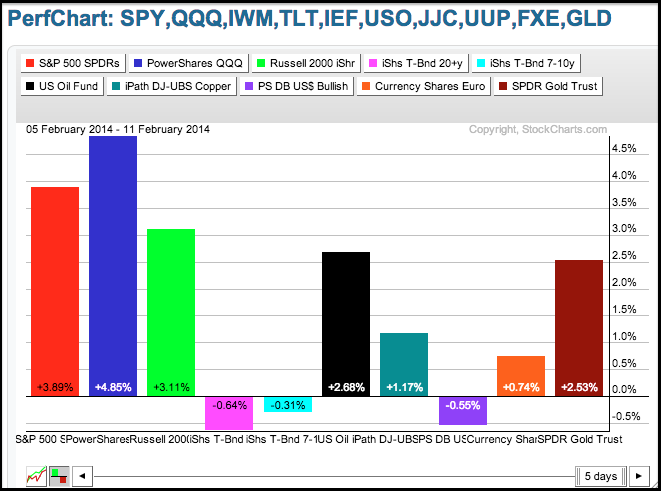Stocks extended the rally with the major index ETFs gaining around 1%. The rally seemed big because the Dow gained almost 200 points, but it was actually modest in percentage terms. DIA did lead the way with a 1.27% advance. The Russell 2000 ETF (IWM) lagged again with a .89% gain. Small-caps have lagged the entire bounce (five days). All sectors were up with the HealthCare SPDR leading the charge (+1.36%). The Consumer Discretionary SPDR lagged with a .73% gain because the Home Construction iShares and the Retail SPDR were not that strong. Again, the rally looks impressive from a five day perspective, but relative weakness in the consumer discretionary sector, retail group and small-caps suggest that this advance is not all that strong. Nevertheless, the short-term trend is up and getting frothy with SPY up 3.89%, QQQ up 4.85% and IWM up 3.11%.
**This chart analysis is for educational purposes only, and should not
be construed as a recommendation to buy, sell or sell-short said securities**

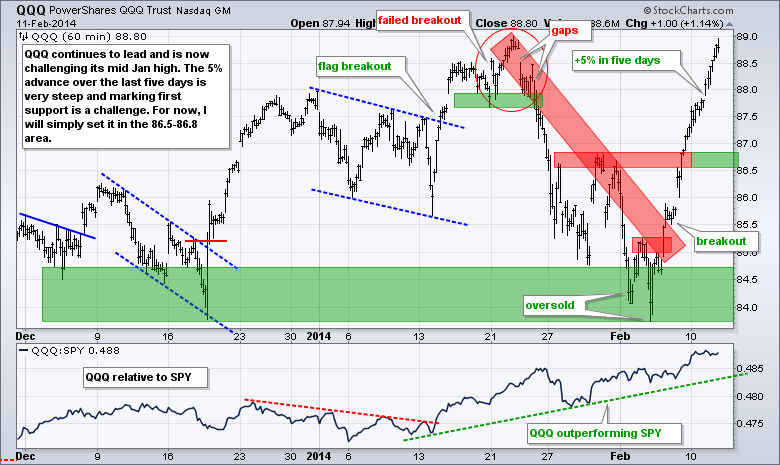
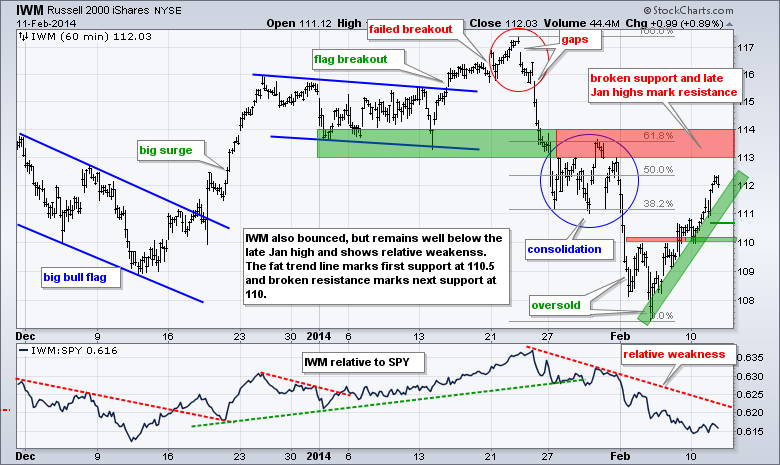
**************************************************************
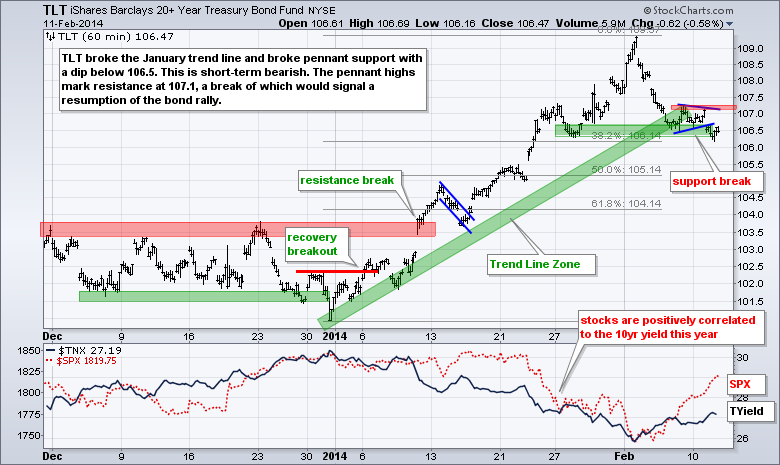
**************************************************************
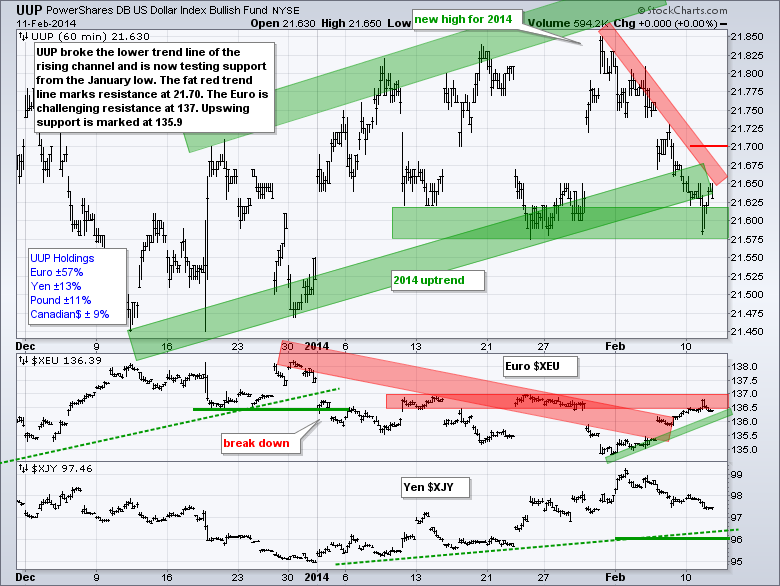
**************************************************************
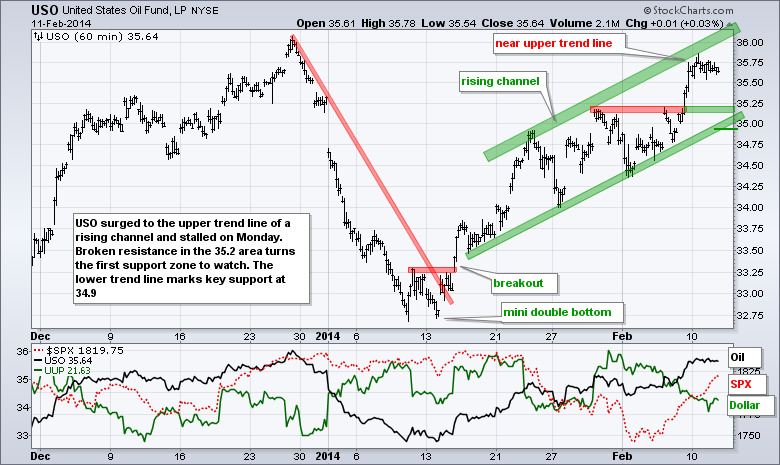
**************************************************************
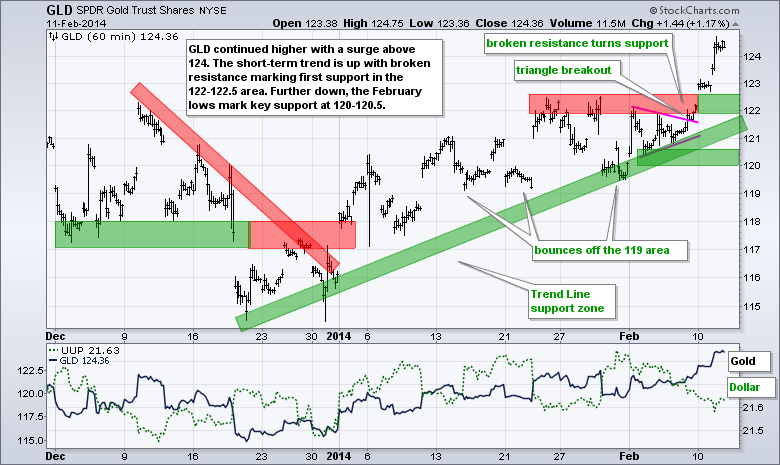
***************************************************************
Key Reports and Events (all times Eastern):
Wed - Feb 12 - 07:00 - MBA Mortgage Index
Wed - Feb 12 - 10:30 - Crude Inventories
Thu - Feb 13 - 08:30 - Initial Claims
Thu - Feb 13 - 08:30 - Retail Sales
Thu - Feb 13 - 10:30 - Natural Gas Inventories
Thu - Feb 13 - 10:30 - Yellen Testifies
Fri - Feb 14 - 09:15 - Industrial Production
Fri - Feb 14 - 09:55 - Michigan Sentiment
Charts of Interest: Tuesday and Thursday
This commentary and charts-of-interest are designed to stimulate thinking. This analysis is
not a recommendation to buy, sell, hold or sell short any security (stock ETF or otherwise).
We all need to think for ourselves when it comes to trading our own accounts. First, it is
the only way to really learn. Second, we are the only ones responsible for our decisions.
Think of these charts as food for further analysis. Before making a trade, it is important
to have a plan. Plan the trade and trade the plan. Among other things, this includes setting
a trigger level, a target area and a stop-loss level. It is also important to plan for three
possible price movements: advance, decline or sideways. Have a plan for all three scenarios
BEFORE making the trade. Consider possible holding times. And finally, look at overall market
conditions and sector/industry performance.

